Cube Audio Nenuphar Loudspeakers by Mike Girardi
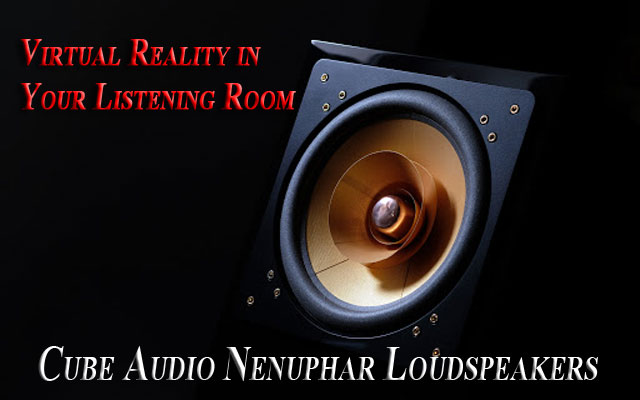
 I first learned about the Cube Audio Nenuphar loudspeakers from a close audiophile friend, Davis Ten, who frequently reviews audio components on Audiogon. We both owned the Tekton Design Double Impact loudspeakers (which are giant killers for the $ in their own right) during that time. Sometime later, we found ourselves branching off into different directions in our search to find the best loudspeaker within a reasonable budget. David was going down the path of the single-driver crossover-less Cube Audio Nenuphars.
I first learned about the Cube Audio Nenuphar loudspeakers from a close audiophile friend, Davis Ten, who frequently reviews audio components on Audiogon. We both owned the Tekton Design Double Impact loudspeakers (which are giant killers for the $ in their own right) during that time. Sometime later, we found ourselves branching off into different directions in our search to find the best loudspeaker within a reasonable budget. David was going down the path of the single-driver crossover-less Cube Audio Nenuphars.
Since hearing the PranaFidelity Vayu(s) at the 2018 Axpona Show, I pursued the multidriver 2.5-way quasi line array Vayu(s). When I first learned about the Cube Audio Nenuphars and studied their published frequency response plots and thought to myself, “No way … not physically possible” can a single-driver loudspeaker compete with a multidriver speaker on all levels (especially in the bass response) while remaining relatively linear in frequency response. The single driver speakers I’ve heard and read about in the past have always had either a “cupped hands” type coloration, limited in frequency response, or were integrated into large enclosures (and were out of my price range). A few years had gone by since talking to David Ten, and I had made many improvements in my system, but I came to a point in my audiophile journey that had me thinking, “Is this all there is? Have I maxed out the performance of my reviewing system?” These questions and the recent reviews by Peter of AVS Showrooms lead me to inquire about the Cube Audio Nenuphar loudspeaker, which is the subject of this review.
 The Cube Audio Nenuphar loudspeakers are based on the 10″ diameter underhung Cube Audio F10 Neo drivers manufactured in house (Poland). Underhung voice coil designs are more expensive and challenging to build but were selected for their lower distortion and dynamic compression properties. The proprietary magnet motor of the F10 driver consists of 81 individual 100% neodymium magnets that deliver 2.4 Tesla in the magnetic gap equal to 9 mm. The voice coil of the F10 driver has a nominal +/- 3mm excursion while being entirely within the magnetic field. The maximum voice coil excursion is +/- 6mm. Full control of the voice coil over-under nominal conditions is said to result in optimum “raw power, linearity, and low distortion.”
The Cube Audio Nenuphar loudspeakers are based on the 10″ diameter underhung Cube Audio F10 Neo drivers manufactured in house (Poland). Underhung voice coil designs are more expensive and challenging to build but were selected for their lower distortion and dynamic compression properties. The proprietary magnet motor of the F10 driver consists of 81 individual 100% neodymium magnets that deliver 2.4 Tesla in the magnetic gap equal to 9 mm. The voice coil of the F10 driver has a nominal +/- 3mm excursion while being entirely within the magnetic field. The maximum voice coil excursion is +/- 6mm. Full control of the voice coil over-under nominal conditions is said to result in optimum “raw power, linearity, and low distortion.”
The lower phenolic suspension known in speaker design as the “spider” developed by Cube Audio is 100% linear within the maximum voice coil excursion. It behaves like a spring rather than a damper, as typically found in standard driver designs. Due to this type of suspension’s low damping properties, lower-level information is transmitted, which allows better enjoyment of music at lower volumes. Development of the motor and suspension was required to control heavier moving speaker cones and suspension mass, as found in the F10 driver. The unique (treated) paper cone structure of the F10 driver consists of the main cone and three Whizzer cones. The smallest Whizzer cone (third cone from the main cone) is responsible for high-frequency dispersion over 18K Hz (without the smallest Whizzer cone, the in-line response is “hot” with high frequencies beaming forward). The 2nd Whizzer cone operates in the range from about 2 kHz to 18kHz. The 1st Whizzer (closest to the main cone) controls the main cone’s resonance and the 2nd Whizzer. The 1st Whizzer cone addresses the “shout” or “cupped hand” sound typical of many full-range drivers. Other unique design parameters employed by the F10 driver and not seen in ordinary single-driver loudspeakers include a segmented cone structure, a folded flange along the cone side, and a foam surround. In a sense, Cube Audio has reinvented the single driver full-range loudspeaker in their Nenuphar and prior offerings.
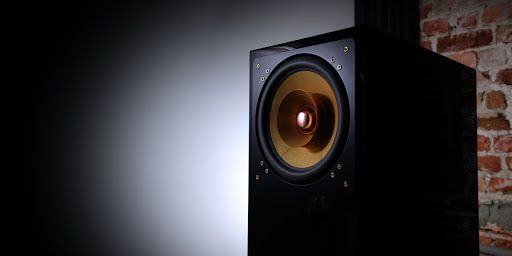
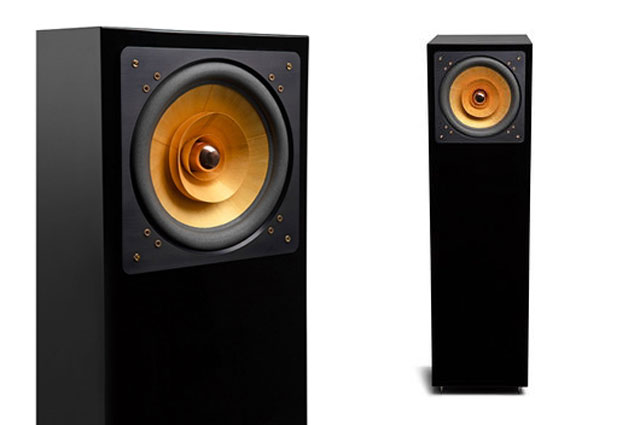
 The Cube Audio loudspeaker TQWT enclosure is designed to achieve a tapered quarter-wave transmission line that acts “almost like a horn and almost like a transmission line.” The speaker enclosure is ported at the bottom of the cabinet. The functionality of the quarter-wave transmission line is accomplished by the internal cabinet construction, bottom port location, and tilting the speaker back from the front baffle, which allows for the elimination of the crossover. The Cube Audio Nenuphar is very simple; it consists of the cabinet, F10 Neo driver, copper hook-up wire, a pair of WBT binding posts. The cabinet is 41″ tall x 11.5″ wide x 19.5″ deep, is offered in high gloss black and white colors. The overall construction and finish are of high quality and looked ascetically pleasing in my listening room. This all results in a single driver 6-Ohm, a full-range loudspeaker (30 Hz to 18k Hz) that is 92 dB efficient with a high wife acceptance factor due to its unobtrusive size.
The Cube Audio loudspeaker TQWT enclosure is designed to achieve a tapered quarter-wave transmission line that acts “almost like a horn and almost like a transmission line.” The speaker enclosure is ported at the bottom of the cabinet. The functionality of the quarter-wave transmission line is accomplished by the internal cabinet construction, bottom port location, and tilting the speaker back from the front baffle, which allows for the elimination of the crossover. The Cube Audio Nenuphar is very simple; it consists of the cabinet, F10 Neo driver, copper hook-up wire, a pair of WBT binding posts. The cabinet is 41″ tall x 11.5″ wide x 19.5″ deep, is offered in high gloss black and white colors. The overall construction and finish are of high quality and looked ascetically pleasing in my listening room. This all results in a single driver 6-Ohm, a full-range loudspeaker (30 Hz to 18k Hz) that is 92 dB efficient with a high wife acceptance factor due to its unobtrusive size.
Single driver full-range loudspeakers are known for their perfect impulse response, time and phase coherency, single-point imaging, filter-less connection to the source, and high sensitivity. Another advantage of using a single driver for frequencies above the lowest bass octave is eliminating loudspeaker crossovers that consist of inductors, capacitors, and resistors. Additionally, other electrical parts are designed to integrate drivers of different sizes, materials, directivity patterns, sensitivities, passbands, distortion profiles, and breakup modes into what “sounds like” a coherent point-source with a uniform phase response. However, there are always trade-offs with any single driver loudspeaker design. The “common” drawbacks found in single-driver designs include restricted high-frequency extension, limited power handling, horn-loading of the single driver, which leads to specific frequency colorations and the need for enormous enclosures that use complex transmission line baffles to achieve the low-end frequency response. As you will see, the Cube Nenuphars address all of these issues with their innovative design approach to achieve a near-perfect loudspeaker.
A Loudspeaker with Emotion
 My reviewing system includes the Uptone JS-2 Linear Power Supply for Qnap TS-251+NAS drive, Ayon Audio S-5 Network Player/Preamplifier/DAC, Ayon Audio Odin III Build 4 amplifier fitted Siemens signal tubes, Tidal Audio Impact, PranaFidelity Vayu(s) loudspeakers, Wireworld Platinum Starlight 8 Twinax Ethernet cables, UpTone Audio EtherREN, Synergistic Research Galileo UEF speaker cables, interconnects, and SX AC power cables, SR PowerCell UEF SE, SR UEF Black outlets, SR HFTs, SR Active Grounding Block SE and UDG cables, SR Black Box, SR MiG 2.0 isolation footers, and PerfectPath Technologies Eden Gates. My listening area is 14ft and 10″ wide with a 9′ ceiling and has a nearly open back wall to 1500 sq ft of first-floor living area.
My reviewing system includes the Uptone JS-2 Linear Power Supply for Qnap TS-251+NAS drive, Ayon Audio S-5 Network Player/Preamplifier/DAC, Ayon Audio Odin III Build 4 amplifier fitted Siemens signal tubes, Tidal Audio Impact, PranaFidelity Vayu(s) loudspeakers, Wireworld Platinum Starlight 8 Twinax Ethernet cables, UpTone Audio EtherREN, Synergistic Research Galileo UEF speaker cables, interconnects, and SX AC power cables, SR PowerCell UEF SE, SR UEF Black outlets, SR HFTs, SR Active Grounding Block SE and UDG cables, SR Black Box, SR MiG 2.0 isolation footers, and PerfectPath Technologies Eden Gates. My listening area is 14ft and 10″ wide with a 9′ ceiling and has a nearly open back wall to 1500 sq ft of first-floor living area.
After allowing the Cubes to settle in for 100 hours, I began optimizing their placement. To achieve a uniform frequency response, I found the Cubes not overly sensitive to their placement. The Cubes sounded excellent close to the front wall (within 15″ or less) while not displaying the typical midrange over-hang typically seen on other loudspeakers I have had, such as the Acoustic Zen Crescendos needed to be at least 32″ from the back wall. In my listening room, the Cubes were 15″ from the front wall (as measured from the rear of the cabinet), 92″ on center, and 114″ to the listening position (as measured from the front baffle). As reviewed, I placed the Cubes on the excellent Townshend Speaker Podiums to enhance the mechanical isolation. I installed the Synergistic Research HFT Speaker kit on the front, sides, back, top, and bottom cabinet surfaces to reduce the speaker cabinets’ interaction within the room sound field.
After listening to the Cubes for a short time, all of my initial concerns about using a single driver loudspeaker in the reproduction of music were immediately put to rest. Having three main constants in my reviewing system over the last three years which included the Ayon Audio S-5 front end, Ayon Audio Odin amplifier, and Synergistic Galileo cabling/PowerCell and swapping in four different loudspeakers (AZ Crescendo, Tekton Design DI SE, PranaFidelity Vayu(s) and the Cube Audio Nenuphars). I can state that the Cubes lacked any coloration across the entire frequency range compared to my previous reference and possessed a more accurate and tactile bass response. For example, it was easy to hear the accentuated mid-bass response on my previous reference, which was clearly seen in the manufacture’s published anechoic chamber plot. The Cubes displayed an incredible improvement, in reality, dynamics, imaging, clarity, transient response, phase coherency, and the reduction of ringing distortion over my previous reference, which best many multidriver floor-standing loudspeakers. The Cubes also completed disappeared in my listening room and had almost boundless soundstage width. What you get from the Cubes is a near-perfect loudspeaker that gets out of the way of the music by being truthful, as I’ve heard to the recording. Isn’t that is what we all seek?
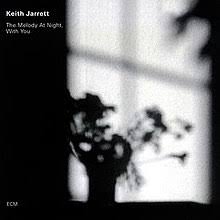 One of my favorite jazz recordings featuring the piano is “The Melody at Night, With You” by Keith Jarrett (ECM Records). “The Melody at Night, With You” is perhaps, Keith Jarrett’s most intimate album. “It comprises solo piano renderings of jazz ballads and folk songs, played with unmistakable affection. Jarrett dispenses with the jazz soloist’s conventional emphasis on dexterity, the ‘clever’ phrase, the virtuosic sleight-of-hand. Instead, he strips these songs to their melodic essence and, gently, lays bare their emotional core. This transcription, which has Keith Jarrett’s personal approval, was worked out at the keyboard and aims, above all, for maximum playability within the most excellent tonal range. Friedrich Grossnick, as an experienced pedagogue, has produced an outstanding score with particular sensitivity to Jarrett’s interpretation, thus enabling its faithful recreation on the piano”. On the Cubes, the piano image is what you would experience if a real grand piano was located in your listening room a little off-center and angled between both loudspeakers. The solo piano filled the entire room with a true sense of the recording studio room acoustics on all tracks. The Cubes’ compelling transparency allowed me to hear the full weight of the hammer strokes on each string and the resulting resonance, which is heard only when listing to a live piano. The Cubes had a way of revealing the micro and macro-dynamics of each piano note played that no other multidriver loudspeaker has ever dreamed of.
One of my favorite jazz recordings featuring the piano is “The Melody at Night, With You” by Keith Jarrett (ECM Records). “The Melody at Night, With You” is perhaps, Keith Jarrett’s most intimate album. “It comprises solo piano renderings of jazz ballads and folk songs, played with unmistakable affection. Jarrett dispenses with the jazz soloist’s conventional emphasis on dexterity, the ‘clever’ phrase, the virtuosic sleight-of-hand. Instead, he strips these songs to their melodic essence and, gently, lays bare their emotional core. This transcription, which has Keith Jarrett’s personal approval, was worked out at the keyboard and aims, above all, for maximum playability within the most excellent tonal range. Friedrich Grossnick, as an experienced pedagogue, has produced an outstanding score with particular sensitivity to Jarrett’s interpretation, thus enabling its faithful recreation on the piano”. On the Cubes, the piano image is what you would experience if a real grand piano was located in your listening room a little off-center and angled between both loudspeakers. The solo piano filled the entire room with a true sense of the recording studio room acoustics on all tracks. The Cubes’ compelling transparency allowed me to hear the full weight of the hammer strokes on each string and the resulting resonance, which is heard only when listing to a live piano. The Cubes had a way of revealing the micro and macro-dynamics of each piano note played that no other multidriver loudspeaker has ever dreamed of.
Furthermore, the sound of the piano always bloomed with a dynamic yet resonant earth-tone vibrant character. Sometimes I even heard the turning of pages while Keith was jamming on the piano keys. In comparison, the piano was located behind the front plane when played through my current reference loudspeakers, appeared the size of a spinet, was not nearly as resolved, or focused, displayed restricted dynamics, was lifeless, lack coherency, and rarely ever established an emotional connection to the music. On the Cubes, I desired to listen to the complete album repeatedly, discovered new aspects of the recording, and developed new emotional connections in the message within the music.
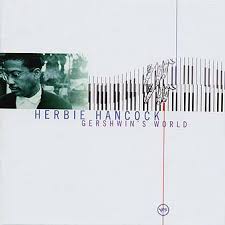 Another reference recording I used to judge the Cubes’ performance is an album composed by Herbie Handcock, “Gershwin’s World” (Verve). This album featured the songs of George and Ira Gershwin. It also featured several prominent musicians, including Joni Mitchell, Chick Corea, Stevie Wonder, Wayne Shorter, and the Orpheus Chamber Orchestra. It was released to coincide with the 100th anniversary of George Gershwin’s birth. The most surprising of Hancock’s guest stars is Joni Mitchell, who delivers a gorgeously sensual vocal on “The Man I Love,” then provides an airy, worldly take on “Summertime.” Stevie Wonder’s unmistakable harmonica complements Mitchell’s singing on “Summertime” and shares lead instrument space with his own voice on the W.C. Handy classic “St. Louis Blues.” Jazzman extraordinaire Wayne Shorter smokes a solo spot on Duke Ellington’s “Cotton Tail” and carves out some space for his soprano saxophone in the midst of “Summertime.” Gershwin’s wonderful, extended “Lullaby” finds Hancock teamed with the Orpheus Chamber Orchestra, as does an attractive arrangement of a “Concerto for Piano and Orchestra” by Maurice Ravel, whose jazz influence can be heard on the piece. “From beautiful to funky, percussive to melodic, improvisational to tightly arranged, Hancock and cohorts take a wondrous journey through the music and world of Gershwin.” On every track, the Cubes always displayed a purity of tonal colors with see-through transparency that allowed all of the micro-details to be heard from a deep black background yet never sound bright or etched. The last cut on this album is a classical piece by the Orpheus Chamber Orchestra, which I typically have overlooked, but when I first played it on the Cubes, it was one of those special moments that brought tears to my eyes. The emotional connection with the music on the speaker is off the charts. I never experienced the raw yet controlled dynamics of my tube stereo amplifier in this way, which is a testament to the benefits of the elimination of the loudspeaker crossover. Hearing the vocals of Joni Mitchell proved to be a revelation in terms of midrange clarity, euphony, and liquidity. Once you listen to vocals on the Cubes, it’s “Game over” for most multidriver loudspeakers.
Another reference recording I used to judge the Cubes’ performance is an album composed by Herbie Handcock, “Gershwin’s World” (Verve). This album featured the songs of George and Ira Gershwin. It also featured several prominent musicians, including Joni Mitchell, Chick Corea, Stevie Wonder, Wayne Shorter, and the Orpheus Chamber Orchestra. It was released to coincide with the 100th anniversary of George Gershwin’s birth. The most surprising of Hancock’s guest stars is Joni Mitchell, who delivers a gorgeously sensual vocal on “The Man I Love,” then provides an airy, worldly take on “Summertime.” Stevie Wonder’s unmistakable harmonica complements Mitchell’s singing on “Summertime” and shares lead instrument space with his own voice on the W.C. Handy classic “St. Louis Blues.” Jazzman extraordinaire Wayne Shorter smokes a solo spot on Duke Ellington’s “Cotton Tail” and carves out some space for his soprano saxophone in the midst of “Summertime.” Gershwin’s wonderful, extended “Lullaby” finds Hancock teamed with the Orpheus Chamber Orchestra, as does an attractive arrangement of a “Concerto for Piano and Orchestra” by Maurice Ravel, whose jazz influence can be heard on the piece. “From beautiful to funky, percussive to melodic, improvisational to tightly arranged, Hancock and cohorts take a wondrous journey through the music and world of Gershwin.” On every track, the Cubes always displayed a purity of tonal colors with see-through transparency that allowed all of the micro-details to be heard from a deep black background yet never sound bright or etched. The last cut on this album is a classical piece by the Orpheus Chamber Orchestra, which I typically have overlooked, but when I first played it on the Cubes, it was one of those special moments that brought tears to my eyes. The emotional connection with the music on the speaker is off the charts. I never experienced the raw yet controlled dynamics of my tube stereo amplifier in this way, which is a testament to the benefits of the elimination of the loudspeaker crossover. Hearing the vocals of Joni Mitchell proved to be a revelation in terms of midrange clarity, euphony, and liquidity. Once you listen to vocals on the Cubes, it’s “Game over” for most multidriver loudspeakers.
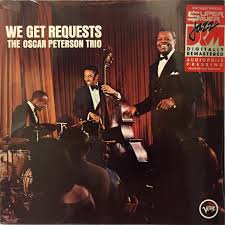 If you really desire to hear a recording with excellent separation of instruments, “We Get Requests” by the Oscar Peterson Trio (RCA Studio) is one of the go-to recordings I frequently demo when I have audiophile friends over for a listen. In this album, which was recorded in 1964, we have Oscar Peterson on piano, Ray Brown on double bass, and Ed Thigpen on drums, which had been together for five years and performed like a well-oiled machine. “The repertoire is mostly pop songs of the day, including bossa nova tunes and film themes, and the treatments are fairly brief, with emphasis placed squarely on the melodies. Even in their lightest moments, though, the group demonstrates some of the qualities that made it among the most influential piano trios in jazz. This group could generate tremendous rhythmic energy and a sense of developing musical detail”. On track number six, “You Look Good to Me,” Ray Brown’s bow stroke double bass lays down the ambiance you will quickly take note of. It immediately grabs you, and you forget about time for the next five minutes. Oscar Peterson’s piano starts with his pedals down and gradually releases the grip over the length of the track. Along the way, you can hear very subtle humming from Ray Brown as he performs his magic on the double bass, which I had only heard on headphones until when I listened to this track on the Cubes. On each track, the piano completely disappeared with the band members spread across the realistic sound field with great accuracy. Also, the Cubes always displayed complete control over the music yet conveyed an ease and liquidity that had a mesmerizing effect. What was also astonishing was that the Cubes could play music at levels louder than my ears could handle without strain or distortion. Incredible.
If you really desire to hear a recording with excellent separation of instruments, “We Get Requests” by the Oscar Peterson Trio (RCA Studio) is one of the go-to recordings I frequently demo when I have audiophile friends over for a listen. In this album, which was recorded in 1964, we have Oscar Peterson on piano, Ray Brown on double bass, and Ed Thigpen on drums, which had been together for five years and performed like a well-oiled machine. “The repertoire is mostly pop songs of the day, including bossa nova tunes and film themes, and the treatments are fairly brief, with emphasis placed squarely on the melodies. Even in their lightest moments, though, the group demonstrates some of the qualities that made it among the most influential piano trios in jazz. This group could generate tremendous rhythmic energy and a sense of developing musical detail”. On track number six, “You Look Good to Me,” Ray Brown’s bow stroke double bass lays down the ambiance you will quickly take note of. It immediately grabs you, and you forget about time for the next five minutes. Oscar Peterson’s piano starts with his pedals down and gradually releases the grip over the length of the track. Along the way, you can hear very subtle humming from Ray Brown as he performs his magic on the double bass, which I had only heard on headphones until when I listened to this track on the Cubes. On each track, the piano completely disappeared with the band members spread across the realistic sound field with great accuracy. Also, the Cubes always displayed complete control over the music yet conveyed an ease and liquidity that had a mesmerizing effect. What was also astonishing was that the Cubes could play music at levels louder than my ears could handle without strain or distortion. Incredible.
Conclusion
These Cube Audio Nenuphars were an easy speaker to review because they were free from all of the shortcomings typically found in multidriver loudspeakers. As a whole, I really couldn’t find any weakness in the Cube Audio Nenuphars, except they exposed flaws in the recording if they were present. In this review, I answered the overarching question, “Is this all there is”? Have I maxed out the performance of my system? and the resounding answers to those questions are “No” and “Loudspeakers can be one of the most flawed components.” My quest for finding a loudspeaker that I could live for a long time is over—my new reference.



Mike Girardi
Specifications:
Cube Nenuphar loudspeaker pair, $14,900
Manufacturer’s Website: www.cubeaudio.eu
US Distributer’s Website: www.refinedaudio.com
Mike’s Associated Equipment
Digital Front End
Ayon Audio S-5 Network Player/Preamplifier
Qnap TS-251+8GB NAS drive
Uptone Audio JS-2 Power Supply
Uptone Audio EtherRegen
Amplification
Ayon Audio Odin SET stereo amplifier III Build 4
Tidal Audio Impact stereo amplifier
Loudspeakers
PranaFidelity Vayu(s) loudspeakers
Cabling
Synergistic Research Galileo UEF speaker cables and jumper
Synergistic Research Galileo UEF interconnect
Synergistic Research Galileo UEF ac power cords, digital and analog
Synergistic Research Galileo UEF Ethernet
Synergistic Research Atmosphere High Definition Grounding cables x 14
Accessories
Synergistic Research PowerCell 12 UEF
Synergistic Research Atmosphere XL and ATM
Synergistic Research Tranquility Base UEF x 2
Synergistic Research HFTs x 38
Synergistic Research FEQ
Synergistic Research Active Grounding Block SE
Synergistic Research Black Box
Perfect Path Technologies Gate
Perfect Path Technologies Omega Mats
LessLoss Blackbody ambient field conditioner x 2
Custom built maple wood rack with stainless steel support rod, sleeves, and cones
Marigo Labs Window Tuning Dots
Herbie’s Audio Lab Preamp Ultrasonic tube dampers
Synergistic Research UEF Black duplexes
Synergistic Research Blue fuses
Oyaide WPC-Z aluminum mounting frame and carbon fiber faceplates
Two dedicated 20 amp AC lines using cryo treated Romex
One thought on "Cube Audio Nenuphar Loudspeakers by Mike Girardi"
Leave a Reply
Stereo Times Masthead
Publisher/Founder
Clement Perry
Editor
Dave Thomas
Senior Editors
Frank Alles, Mike Girardi, Russell Lichter, Terry London, Moreno Mitchell, Paul Szabady, Bill Wells, Mike Wright, and Stephen Yan,
Current Contributors
David Abramson, Tim Barrall, Dave Allison, Ron Cook, Lewis Dardick, John Hoffman, Dan Secula, Don Shaulis, Greg Simmons, Eric Teh, Greg Voth, Richard Willie, Ed Van Winkle, Rob Dockery, Richard Doron, and Daveed Turek
Site Management Clement Perry
Ad Designer: Martin Perry


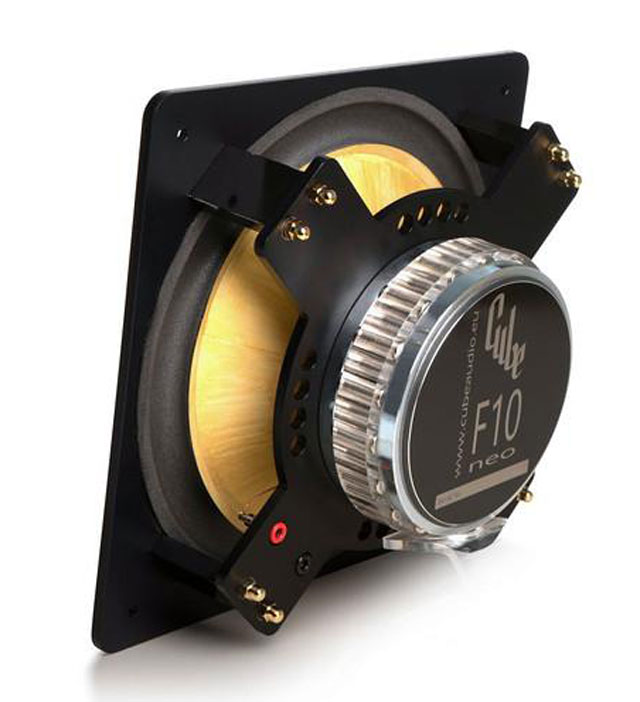




This 8″ driver will not cover the whole spectrum at a realistic volume without distorting from over excursion in the lf.
With a subwoofer in the mix…. and with Lf/excursion hidden from the FR driver playing from ~60hz and up isn’t a big deal… unless this driver is sporting performance not had by other similar sized drivers (looking for a very clean CSD) whats special to see here? Remarks were made about an especially powerful motor. That would be to the benefit of accuracy but maybe not, it seems a balancing act is needed but measurements show proof of performance…. words show proof of word salad and meaningless opinions…
Take the driver outside, take proper measurements, show the results, the results will speak for themselves